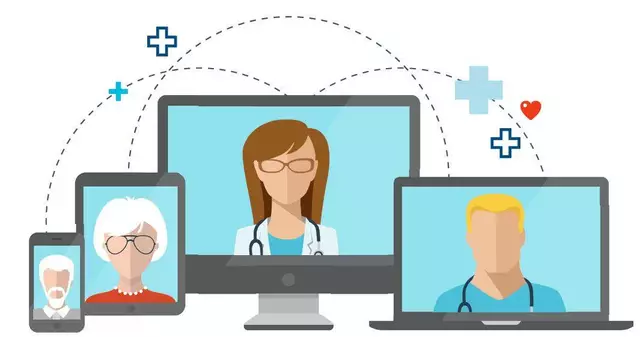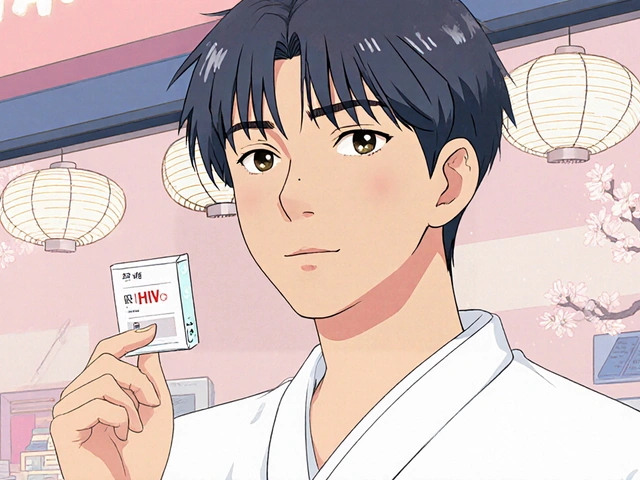When your nose starts running, your eyes itch, or your skin breaks out in hives, antihistamines are often the first thing you reach for. But not all antihistamines are the same. There are two main types-first-generation and second-generation-and the difference between them isn’t just about brand names or price. It’s about how they work in your body, what side effects you’ll feel, and whether they’ll let you drive, work, or sleep without feeling drugged.
What Antihistamines Actually Do
Antihistamines block histamine, a chemical your body releases during an allergic reaction. Histamine makes blood vessels leaky, causes swelling, and triggers sneezing, itching, and runny noses. Both first- and second-generation antihistamines do this job. But how they get to the job-and what else they do along the way-is where things split.
First-generation antihistamines like diphenhydramine (Benadryl), chlorpheniramine (Chlor-Trimeton), and promethazine (Phenergan) were developed in the 1940s. They’re small, fat-soluble molecules that slip easily through the blood-brain barrier. That’s why they work fast-sometimes in under 30 minutes-but also why they make you sleepy. Second-generation antihistamines like loratadine (Claritin), cetirizine (Zyrtec), and fexofenadine (Allegra) came out in the 1980s. They’re designed to be bigger or more polar, so they mostly stay out of your brain. That’s why they’re called “non-drowsy.” But that doesn’t mean they’re perfect.
Side Effects: Sleepiness vs. Dry Mouth vs. Nothing
If you’ve ever taken Benadryl for allergies and then felt like you’d been hit by a truck, you’ve experienced the main downside of first-generation antihistamines. Between 50% and 60% of people who take them report noticeable drowsiness. That’s not just inconvenient-it’s dangerous. Studies show these drugs can slow reaction times by 25% in driving simulations, similar to having a blood alcohol level of 0.05%. For older adults, the risks are even higher. Chronic use has been linked to memory problems and an increased chance of dementia, with some experts comparing the cognitive impact to low-dose benzodiazepines.
First-generation antihistamines also cause dry mouth, blurry vision, constipation, and trouble urinating-especially in men with enlarged prostates or older adults. These are anticholinergic effects, meaning they block another important chemical in your body besides histamine. That’s why they’re sometimes used for motion sickness or nausea: they calm the vomiting center in the brain. But for everyday allergies? These side effects are a trade-off most people don’t want to make.
Second-generation antihistamines are much cleaner. Only 10% to 15% of users report mild drowsiness, and that’s usually at higher doses or in sensitive individuals. They don’t cause the same level of dry mouth or urinary issues. The trade-off? They take longer to kick in-1 to 3 hours instead of 30 minutes. If you’re already sneezing at your desk, that delay can feel frustrating.
Efficacy: Which One Works Better?
Here’s the surprise: second-generation antihistamines are often more effective for nasal symptoms. A 2022 meta-analysis found they reduce allergic rhinitis symptoms by 60% to 70%, compared to 50% to 60% for first-generation ones. That’s not because they’re stronger-it’s because they’re more consistent. People taking them once a day stick with the regimen. People taking Benadryl every 4 to 6 hours? They forget. One study showed 85% adherence for once-daily pills versus just 60% for multiple daily doses.
But first-generation antihistamines still have their moments. They’re faster. If you get hit with a sudden allergic reaction-like a bee sting or a surprise pollen blast-they can stop symptoms quicker. That’s why many people keep Benadryl in their car or purse. They’re also better at calming itchy skin. In fact, many dermatologists still recommend them for acute hives because they work faster and more intensely.
Among second-generation options, not all are equal. Cetirizine (Zyrtec) tends to work better than loratadine (Claritin) for eye symptoms and moderate-to-severe allergies. Fexofenadine (Allegra) is gentler on the stomach and doesn’t interact as much with food, but it doesn’t help as much with nasal congestion. That’s why many doctors now recommend combination products-like fexofenadine with pseudoephedrine-for people who need both antihistamine and decongestant effects.

Cost and Accessibility
Price matters. A bottle of 100 generic diphenhydramine tablets costs about $4 to $6. That’s less than a dollar per dose. A 30-pack of generic cetirizine? Around $10 to $15. Brand-name Zyrtec or Claritin? Over $25 a month. For people without insurance, that difference is huge.
But here’s the catch: first-generation antihistamines are everywhere-in cold and flu combos, sleep aids, and even some skin creams. You don’t need a prescription. Second-generation ones are mostly OTC now too, but they’re marketed as “allergy-specific,” so they cost more. Many pharmacies now offer generic versions at low prices, but you have to know to ask for them.
One thing you won’t find: first-generation antihistamines in most workplace wellness kits. Companies prefer second-generation ones because employees don’t fall asleep at their desks. In fact, 40% of Fortune 500 companies now stock Claritin or Zyrtec in first-aid stations. They’re safer, more reliable, and better for productivity.
When to Use Which
So which one should you pick? It depends on your life.
- Use first-generation if: You need fast relief for a sudden reaction, you’re using it at night to help with sleep (and allergies), or you have severe hives and need something stronger. Many people use Benadryl as a sleep aid because it knocks them out-but that’s not its intended use, and long-term use can backfire.
- Use second-generation if: You have chronic allergies, you work, drive, or care for kids, you want to avoid brain fog, or you need something you can take every day without thinking about it. These are the go-to for most doctors today.
For kids, second-generation antihistamines are almost always preferred. The American Academy of Allergy, Asthma & Immunology recommends them as first-line therapy because they don’t interfere with learning or behavior. For older adults, the advice is even clearer: avoid first-generation unless absolutely necessary. The risks of confusion, falls, and urinary problems outweigh the benefits.

What Experts Say
Dr. David Stukus, a pediatric allergist, says: “Second-generation antihistamines should be first-line therapy for most patients with chronic allergic conditions.” That’s the standard now. But he also adds: “First-generation agents still have important roles-for acute urticaria, motion sickness, and nighttime symptom control.”
Dr. Linda Cox, a past president of the American College of Allergy, points out the irony: “The sedative properties once seen as a flaw are now a therapeutic advantage for patients with insomnia and allergies.” That’s why some people take Benadryl at night and Zyrtec in the morning. It’s not ideal, but it works.
And then there’s the warning from Dr. Pieter Cohen: “Chronic use of first-generation antihistamines in the elderly is like taking low-dose benzodiazepines.” That’s not hyperbole. It’s backed by studies showing cognitive decline over time.
Real People, Real Experiences
On Reddit, users say: “Zyrtec lets me function at work without the brain fog Benadryl gives me.” On Drugs.com, people say: “Diphenhydramine gives me better sleep than melatonin.”
Amazon reviews show second-generation antihistamines rated higher overall-4.2 stars versus 3.8 for first-gen. Why? Because people appreciate not feeling drugged. But the most common complaint about second-gen? “It didn’t work fast enough.” That’s a timing issue, not an effectiveness issue. You need to take them before exposure, not after.
What You Need to Know Before You Buy
- “Non-drowsy” doesn’t mean “no drowsiness.” High doses of second-generation antihistamines can still make you sleepy.
- Don’t take first-generation antihistamines with alcohol, sleeping pills, or certain antidepressants. The combo can be dangerous.
- Second-generation antihistamines can interact with grapefruit juice, certain antibiotics, and antifungals. Check with your pharmacist.
- Start with generic cetirizine or loratadine. They’re cheap, effective, and widely available.
- If you’re over 65, avoid first-generation unless your doctor specifically says otherwise.
Most people don’t realize antihistamines aren’t one-size-fits-all. Your choice should match your lifestyle, your age, your symptoms, and your risk tolerance. For most people today, second-generation antihistamines are the smarter, safer, and more practical option. But first-generation still has its place-just not every day, and not for everyone.
Are first-generation antihistamines safe for long-term use?
Long-term use of first-generation antihistamines, especially in people over 65, is not recommended. These drugs have strong anticholinergic effects that can lead to memory problems, confusion, urinary retention, and an increased risk of dementia. Studies show their cognitive impact is similar to low-dose benzodiazepines. For chronic allergies, second-generation antihistamines are safer for daily, long-term use.
Can I take second-generation antihistamines every day?
Yes, second-generation antihistamines like loratadine, cetirizine, and fexofenadine are designed for daily use. They’re non-sedating at standard doses, don’t cause tolerance over time, and have excellent safety profiles for long-term use. Many people take them year-round during allergy season or for chronic hives without issues.
Why does Zyrtec work better than Claritin for some people?
Cetirizine (Zyrtec) has a stronger binding affinity to histamine receptors and penetrates tissues more effectively than loratadine (Claritin). Clinical trials show it provides 15% to 20% greater symptom relief for moderate-to-severe allergic rhinitis, especially for itchy eyes and nose. It also works faster in some individuals, though both are effective for most people.
Is Benadryl good for sleep?
Benadryl (diphenhydramine) can help you fall asleep because it causes drowsiness, but it’s not a true sleep aid. It disrupts deep sleep cycles and can cause next-day grogginess. Long-term use may lead to tolerance and cognitive decline, especially in older adults. Better alternatives for sleep include melatonin or prescription sleep medications under medical supervision.
Do antihistamines cause weight gain?
Some people report weight gain with long-term antihistamine use, especially first-generation ones. This may be due to increased appetite or slowed metabolism from sedation. Second-generation antihistamines are less likely to cause this. If you notice weight gain while taking antihistamines daily, talk to your doctor about switching or adjusting your treatment plan.
Can I take antihistamines with other medications?
First-generation antihistamines can interact dangerously with alcohol, sedatives, antidepressants, and certain heart medications. Second-generation ones are safer but can still interact with grapefruit juice, ketoconazole, erythromycin, and some antifungals. Always check with your pharmacist before combining antihistamines with other drugs.






First-gen antihistamines are basically pharmaceutical sedatives with a side of allergies. You think you’re treating hay fever but you’re just medicating your brain into a coma. And don’t even get me started on how Big Pharma markets these as ‘OTC solutions’ while quietly funding studies that downplay the dementia risk. It’s not science-it’s capitalism with a side of diphenhydramine.
I’m a nurse and I’ve seen this play out so many times-grandma takes Benadryl every night ‘to sleep’ and then falls in the bathroom, forgets her meds, and ends up in the ER. Second-gen isn’t just ‘less drowsy’-it’s a public health win. I always tell my elderly patients: if you’re taking something for sleep that wasn’t prescribed for sleep, you’re playing Russian roulette with your cognition. Cetirizine at night? Fine. Benadryl? No. 🚫😴
Y’all act like Zyrtec is some miracle drug but I’ve been on it for 3 years and it does jack squat for my sinuses. Meanwhile Benadryl hits like a sledgehammer-sure I nap for an hour, but at least I’m not sneezing into my keyboard. If you’re not getting relief, you’re just not dosing right. Also, ‘non-drowsy’ is a lie sold by corporate marketers who don’t live in pollen hell.
Stop making excuses for first-gen drugs. They’re not ‘faster’-they’re just more toxic. If your job requires you to be alert, don’t risk your brain for 30 minutes of relief. You wouldn’t drive drunk, so why take a drug that mimics it? Generic cetirizine costs less than your morning coffee. Choose wisely. Your future self will thank you. 💪
It’s funny how we’ve turned medicine into a performance. We don’t just want to feel better-we want to feel better without feeling anything at all. The second-gen obsession is less about health and more about productivity worship. What happened to just resting when you’re sick? Now we’re all just caffeine-fueled zombies popping pills like candy so we can ‘function.’ We’ve lost touch with the body’s rhythm.
They say second-gen is safer but have you read the fine print? The studies are funded by the same companies that make them. And who’s to say long-term histamine suppression doesn’t cause immune dysregulation? Maybe we’re trading one problem for a quieter, slower-burning one. I stopped all antihistamines and started nasal rinses and local honey. My symptoms are worse but my mind is clearer. Sometimes the cure is worse than the disease.
Did you know the blood-brain barrier was engineered by Big Pharma to let first-gen drugs in? It’s not biology-it’s design. They want you sedated so you don’t question the system. 🧠🪄 Zyrtec? That’s just the new Prozac for allergies. They’re not curing anything-they’re conditioning you to need their pills forever. And don’t even get me started on the glyphosate-pollen connection…
Let’s be real-Benadryl is the OG. Second-gen is just corporate rebranding with a prettier label. You want efficacy? Go old school. You want to be a docile corporate drone? Take your Zyrtec and thank the algorithm. The fact that Fortune 500s stock Claritin isn’t a win-it’s a warning. They don’t care if you’re healthy. They care if you’re productive. 🤖
My grandpa took Benadryl every night for 20 years. He died at 89. No dementia. No falls. Just quiet. Maybe it’s not the drug. Maybe it’s how you use it. Stop scaring people with stats. Real life isn’t a meta-analysis.